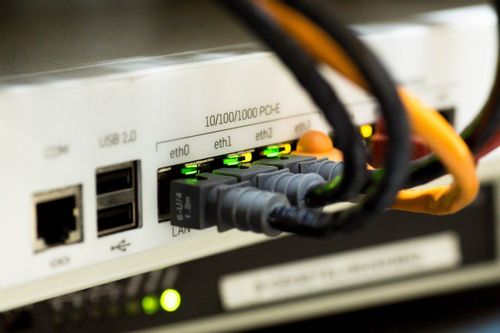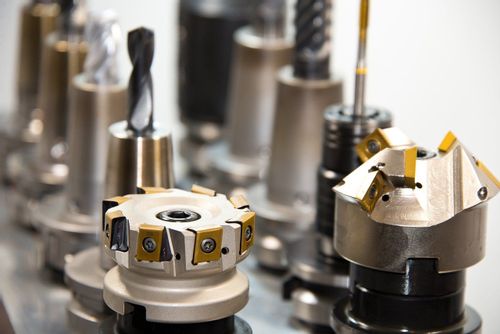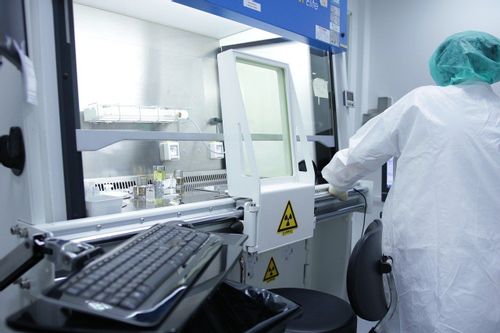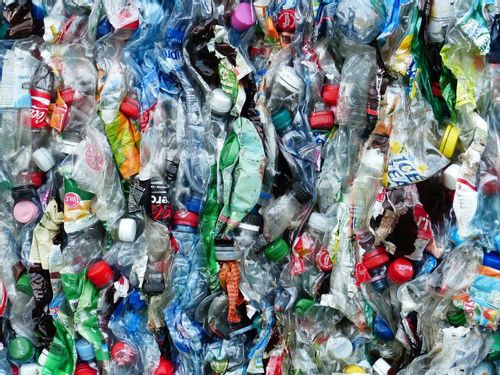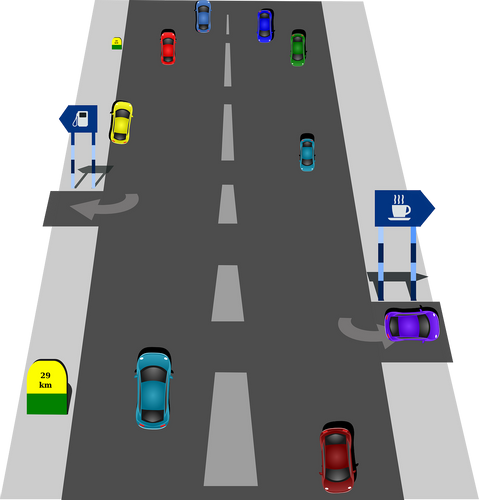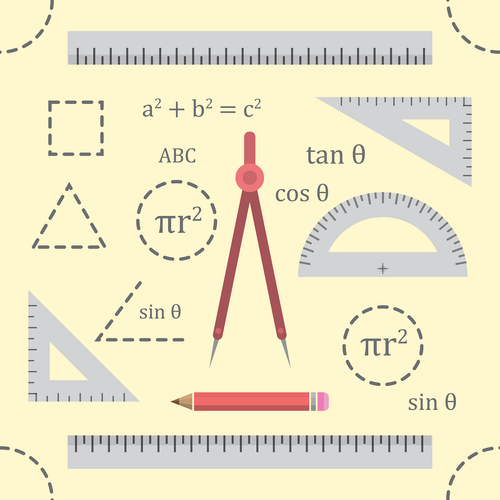Standards Packages
iTeh together with SIST has developed and compiled a comprehensive collection of standard packages to support your standard requirements. Our packages cover an array of content that includes quality management, risk management, road vehicles, machine safety, and much more. With over 200 packages to choose from, you are sure to find a collection to suit your standard needs.
Latest Standards
This document specifies requirements for producing and testing a dyed sulfuric acid anodic coating on aluminium alloys. The anodizing process is applied in the manufacture of aerospace products to improve paint adhesion and resistance to corrosion and can colour the part in accordance with the drawing requirements.
- Standard8 pagesEnglish languagesale 15% off
This document specifies the requirements for technical procedures, quality inspection, etc. for the surface treatment of austenitic stainless steel parts (e.g. 300 series, AISI 651, A286 or equivalent). This document applies to the removal of organic and inorganic contaminants, surface cleaning, surface finishing and surface passivation before the non-destructive test of austenitic stainless steel parts.
- Standard11 pagesEnglish languagesale 15% off
NOTE Clause A.2 contains guidance or rationale for this clause. This document specifies requirements for small-bore connectors intended to be used for connections in neural applications. This document does not specify requirements for the medical devices or accessories that use these connectors. Such requirements are given in particular standards for specific medical devices or accessories.
- Standard31 pagesEnglish languagesale 15% off
- Standard32 pagesFrench languagesale 15% off
This document specifies a method for the determination of the specific electrical resistivity of cathode blocks and baked anodes used in the production of aluminium, using samples at ambient temperature.
- Standard4 pagesEnglish languagesale 15% off
This document analyses a feasible way to accommodate interoperability elements for the data component of a spatial data infrastructure (SDI) and extend the meta model framework for interoperability (MFI) in securing interoperability among heterogeneous domain information models under the smart city context. This document: a) outlines the interoperability issues for city domain information models; b) reviews relevant standards and best practices and examines methodologies or solutions to tackle the interoperability issues; c) supposes a use case and provides an example to secure interoperability among different domain information models using model registry; d) specifies technical requirements in concern about how to apply the interoperability elements of the meta model framework to support the interoperability of smart city services; e) highlights the standardization items to be developed to secure interoperability.
- Technical report18 pagesEnglish languagesale 15% off
This document specifies requirements for producing and testing an undyed sulfuric acid anodic coating on aluminium alloys. The anodizing process is applied in the manufacture of aerospace products to improve paint adhesion and resistance to corrosion.
- Standard8 pagesEnglish languagesale 15% off
This document provides a telehealth cybersecurity reference model of the overall security framework for systems and services applied to telehealth. This document contains a general description of: — factors of telehealth cybersecurity threats; — relationships between security risks and safety risks in telehealth services; — methodologies for defining security levels in telehealth services; — a cybersecurity reference model of telehealth services. Defining the specific type of telehealth services is not covered in this document.
- Technical specification12 pagesEnglish languagesale 15% off
1.1 General
This document is applicable to food depositors as listed in 1.2 and the equipment typically integrated with them, i.e. product pumps, product elevators, conveyors and indexing mechanisms, when they are used as intended and under conditions of misuse which are reasonably foreseeable by the manufacturer (see Annex B).
This document deals with the significant hazards, hazardous situations and events during transport, assembly and installation, commissioning, use, decommissioning, disabling, dismantling and scrapping.
NOTE 1 According to the clause which is referred to, "use" includes "setting, teaching/programming or process changeover, operation, cleaning, fault finding and maintenance".
NOTE 2 Although this document is intended to apply to depositors used in the food industry, many of its requirements can also be used for the same or similar machines used in other industries.
This document does not apply to the following machines:
- auger depositors or auger fillers and gravimetric filling machines; safety requirements for these machines are contained in EN 415-3;
- automatic dough dividers, safety requirements for these machines are contained in EN 12042;
- filling machines for sausages, safety requirements for these machines are contained in EN 12463;
- mincing machines, safety requirements for these machines are contained in EN 12331;
- food depositors that are powered exclusively by manual effort;
- roller depositors intended for use in craft bakeries. Safety requirements for these machines are in EN 17677.
This document does not deal with the following hazards:
- hazards related to the use of food depositors in a potentially explosive atmosphere;
- hazards that can arise from using a food depositor to deposit a non-food product.
This document is not applicable to food depositors that were manufactured before the date of its publication as a European Standard.
1.2 Types of food depositors
1.2.1 General
This document deals with five different types of food depositor. The component parts of each of the different types of depositor are labelled in the figures shown in Clause 4 of this document.
1.2.2 Piston depositor
A piston depositor typically comprises a hopper, a rotary valve, a product measuring chamber in the form of a piston and a product dispensing valve. Some piston depositors incorporate several product measuring chambers and dispensing valves. Some designs dispense the product directly from the rotary valve without the use of a separate product dispensing valve. The volume of product dispensed is varied by altering the stroke of the product measuring chamber piston. Piston depositors are used to fill liquids, liquids containing solids in suspension and pastes. The product dispensing valve can be attached rigidly to the depositor or using a flexible pipe and in some cases is held by the operator. Figure 1 shows the typical cross section of a piston depositor.
Figure 1 - Piston depositor
1.2.3 Chamber depositor
A chamber depositor comprises a hopper feeding one or more product measuring chambers that are filled under gravity from the top. When the chamber has been filled with product the flow of product is stopped either by moving the chamber or using a product cutting device. The product is then discharged through the bottom of the chamber either by moving the chamber or by moving a plate in the base of the chamber. The volume of product dispensed is varied by altering the volume of the chamber. Chamber depositors are typically used to deposit free-flowing products like cooked rice or pasta. Figure 2 shows the typical cross section of a chamber depositor.
Figure 2 - Chamber depositor
1.2.4 Roller depositor
A roller depositor typically comprises a hopper that feeds product to two or more fluted contra-rotating rollers. These rollers force the product through one or more dies that shape the product.
...
- Standard49 pagesEnglish languagesale 10% offe-Library read for1 day
This document specifies the requirements for technical procedures, quality inspection, etc. for the surface treatment of martensitic, precipitation hardening and maraging stainless steel parts (e.g.400 series, 17-7PH, 17-4PH, 15-5PH, AM350, AM355, PH15-7Mo, PH13-8Mo, Custom 450 and 455 or equivalent). It provides practical methods for removing contaminants and for obtaining suitable corrosion resistance for aerospace applications. This document applies to the removal of organic and inorganic contaminants, surface cleaning, surface finishing and surface passivation before non-destructive inspection of martensitic, precipitation hardening and maraging stainless steel parts.
- Standard11 pagesEnglish languagesale 15% off
This document specifies a test method for the quantitative determination of the antifungal activity by measuring the intensity of luminescence produced by an enzymatic reaction [adenosine triphosphate (ATP) method]. This document is applicable to various kinds of textile products, such as fibres, yarns, fabrics, clothing, bedclothes, home furnishings and other miscellaneous goods.
- Standard19 pagesEnglish languagesale 15% off
- Standard20 pagesFrench languagesale 15% off
This document specifies information metadata, metrics metadata, clinical data linkage metadata, auxiliary fields, SAM interoperability, protection metadata and programming interfaces of genomic information. It defines: — metadata storage and interpretation for the different encapsulation levels as specified in ISO/IEC 23092-1 (in REF Section_sec_6 \r \h Clause 6 08D0C9EA79F9BACE118C8200AA004BA90B02000000080000000E000000530065006300740069006F006E005F007300650063005F0036000000 ); — metrics metadata containing sequencing data metrics at the dataset and access unit levels as specified in ISO/IEC 23092-1 (in REF Section_sec_7 \r \h Clause 7 08D0C9EA79F9BACE118C8200AA004BA90B02000000080000000E000000530065006300740069006F006E005F007300650063005F0037000000 ); — clinical data linkage metadata stored at the dataset group, dataset and annotation table levels as specified in ISO/IEC 23092-1 (in REF Section_sec_8 \r \h Clause 8 08D0C9EA79F9BACE118C8200AA004BA90B02000000080000000E000000530065006300740069006F006E005F007300650063005F0038000000 ); — protection elements providing confidentiality, integrity and privacy rules at the different encapsulation levels as specified in ISO/IEC 23092-1 (in REF Section_sec_9 \r \h Clause 9 08D0C9EA79F9BACE118C8200AA004BA90B02000000080000000E000000530065006300740069006F006E005F007300650063005F0039000000 ); — how to associate auxiliary fields to encoded reads (in REF Section_sec_10 \r \h Clause 10 08D0C9EA79F9BACE118C8200AA004BA90B02000000080000000F000000530065006300740069006F006E005F007300650063005F00310030000000 ); — interfaces to access genomic information coded in compliance with ISO/IEC 23092-1 and ISO/IEC 23092-2 (in REF Section_sec_12 \r \h Clause 12 08D0C9EA79F9BACE118C8200AA004BA90B02000000080000000F000000530065006300740069006F006E005F007300650063005F00310032000000 ); — mechanisms for backward compatibility with existing SAM content, and exportation to this format (in Annex E).
- Standard120 pagesEnglish languagesale 15% off
This document specifies the requirements relating to:
Aluminium alloy AL-P2014A
T6 or T62
Clad sheets and strips
0,4 mm ≤ a ≤ 6 mm
for aerospace applications.
- Standard9 pagesEnglish languagesale 10% offe-Library read for1 day
This document specifies three methods for the determination of the ash of poly(vinyl chloride).
The general procedures given in ISO 3451-1 are followed. For ash, method A is used. For sulfated ash, methods B and C are used. All three methods are applicable to resins, compounds and finished products. Methods B and C are applicable when lead-containing compounds are present.
- Standard15 pagesEnglish languagesale 10% offe-Library read for1 day
IEC 62282-3-202:2025 provides performance test methods specialized for the thermal and electrical characteristics of an energy management system to effectively share the heat and power of networked small stationary fuel cell power systems. These test methods are applied for each small stationary fuel cell power system. This document covers small stationary fuel cell power systems which can be complemented with a supplementary heat generator or a thermal storage system, or both, such as:
- output: rated electric power output of less than 10 kW for each system;
- output mode: grid-connected or independent operation or stand-alone operation with alternating current (AC) output not exceeding 240 V or direct current (DC) output;
- operating pressure: maximum allowable working pressure of less than 0,1 MPa (G) for the fuel and oxidant passages;
- fuel: gaseous fuel (natural gas, liquefied petroleum gas, propane, butane, hydrogen) or liquid fuel (kerosene, methanol); oxidant: air.
This document does not apply to small stationary fuel cell power systems with electricity storage other than (small scale) back-up power for safety, monitoring and control.
- Standard52 pagesEnglish languagesale 10% offe-Library read for1 day
- Corrigendum3 pagesEnglish languagesale 10% offe-Library read for1 day
This document specifies the most important design and metrological characteristics of two-point inside micrometers:
— with a scale interval or digital step of 0,001 mm and 0,01 mm;
— with analogue or digital indication.
This document is applicable to two-point inside micrometers with and without interchangeable extensions.
This document does not apply to micrometers fitted with a dial gauge, or to jaw micrometers.
- Standard21 pagesEnglish languagesale 10% offe-Library read for1 day
This document specifies the requirements for washer-disinfectors (WD) intended to be used for the cleaning and chemical disinfection, in a single operating cycle, of reusable items such as:
a) bed frames;
b) bedside tables;
c) transport carts;
d) containers;
e) surgical tables;
f) sterilization containers;
g) surgical clogs;
h) wheelchairs;
i) aids for persons with disabilities.
This document also specifies the performance requirements for the cleaning and disinfection of the WD and its components and accessories.
Devices identified within the scopes of ISO 15883-2, ISO 15883-3, ISO 15883-4, and ISO 15883-6 do not fall within the scope of this document.
In addition, this document specifies the methods for type testing, works testing, validation (installation, operation, and performance qualification on first installation), routine control, and monitoring, as well as requalifications to be carried out periodically and after essential repairs.
NOTE 1 WD covered by this document can also be used for cleaning and chemical disinfection of other thermolabile and reusable devices as recommended in the instructions for use (IFU) for those devices.
NOTE 2 The performance requirements specified in this document cannot ensure the inactivation or removal of the causative agent(s) (prion proteins) of transmissible spongiform encephalopathies.
- Standard44 pagesEnglish languagesale 10% offe-Library read for1 day
This document specifies two accelerated corrosion test methods. These methods assess the corrosion resistance of products containing copper in environments where there is a significant influence of chloride ions, mainly as sodium chloride from a marine source or winter road de-icing salt, as well as the influence of corrosion-promoting gases from industrial or traffic air pollution.
This document specifies both the test apparatus and test procedures to be used in executing the accelerated corrosion tests.
The methods are especially suitable for assessing the corrosion resistance of sensitive products with metals, e.g. electronic components, used in traffic and industrial environments.
- Standard21 pagesEnglish languagesale 10% offe-Library read for1 day
This document specifies the requirements for the effective control of non-deliverable software. This document can be used during the design, development, test, production, release, use, maintenance, and retirement of non-deliverable software. This can include non-deliverable software procured from external suppliers and utilized in the design, production, evaluation, test, acceptance, or calibration of a deliverable product.
This document focuses solely on the unique requirements of the operational processes that pertain to non-deliverable software as identified below:
This document applies to non-deliverable software (including firmware) that affects a deliverable product or service. Following are several applications and supporting examples of non-deliverable software that is within the scope of this document:
— design and development: modelling, simulation, virtual reality, virtual machine, computer-aided design (CAD), three-dimensional (3D) modelling and analysis tools, software compiler, and code generators;
— manufacturing: additive manufacturing, computer numerical controlled (CNC) programs, robotics, factory automation, tools that load deliverable software, software used in special process (e.g. heat treat, shot peen, sonic wall inspection), and automated manufacturing software (i.e. pick and place);
— verification, validation and maintenance: coordinate measuring machine (CMM) programs, hardware or software qualification, code coverage, test scripts, analysis tools, acceptance test, production acceptance, calibration (inspection, test or calibration), simulator, emulator, and software used in post-delivery service provisions.
The following types of software are not within scope of this document:
— deliverable software (refer to EN 9115);
— manufacturing and measuring equipment embedded software (e.g. operating system, drivers);
— enterprise or office software (e.g. MS Office, word processing or spreadsheet applications, Teams, network software, email, employee management system).
Operational processes not covered in this document are addressed by the respective organization’s quality management system (QMS), based on the EN 9100-series (i.e. EN 9100, EN 9110, EN 9120) and/or ISO 9001 standards.
- Standard14 pagesEnglish languagesale 10% offe-Library read for1 day
This document specifies a method of determining the ability of elements of connection to withstand sinusoidal or random vibrations of specified severities.
It is used together with EN 2591-100.
This test is based on EN 60068-2-6 and EN 60068-2-64.
- Standard14 pagesEnglish languagesale 10% offe-Library read for1 day
Benefits

Full Standards Solution
Our catalog includes not only latest standards but also full meta information about related standardization project lifecycle.

Cost Effective
Our PRICE MATCH GUARANTEE policy with multi-level volume discounts gives our clients the best option in the market. In addition, you can get access to the standards for 3, 10, or 30 days.

Stay Notified
Get alerted to the latest revisions and new standards in the Weekly Newsletter. Standards are constantly changing. Don’t miss a revision that can impact your business.
About Us
iTeh Inc is a software development and IT consulting team of professionals who provide consulting, development and implementation of solutions for all types of businesses.
In cooperation, with the Slovenian Institute of Standardization (SIST), we create a unique solution that covers all aspects of the lifecycle of Standardization organizations. iTeh Standards is a part of the solution that helps SIST to provide and sell their products to Customers.
iTeh Standards Store is an evolving project, our goal is to build long-term relationships with our customers. We believe in delivering quality services to solve our customers' challenges and define success by exceeding our customers' expectations. We are always ready to listen and our experience allows us to provide our customers with helpful effective suggestions. You can contact us by email.
We are committed to providing the best possible experience for our customers.
Compliance with international standards is increasingly becoming one of the key competitive advantages in the global market. Our company creates all conditions for the most comfortable implementation of new documents and norms in the processes carried out by your organization. Some of the key advantages of working with us are:
- Cost-effective - multi-level discounts and permanent updates of the functions give our clients the best option on the market.
- e-Library - access to standards for a period of time of your choice. It is a cost-effective solution for keeping updated with the newest standards.
- Company-wide documents - create a company account and connect all employees with access to purchased standards, e-Library documents, and packages.
- All in one spot - all purchased standards are kept in one place with controlled access by the account administrator.
- Client-centric - providing quality consulting is the prerogative and incentive to create new products that accompany your success and scale.
- 24 / 7 client support
We are dedicated to building mutually beneficial and long-term relationships with our clients. That is why our team focuses on creating services to help our customers develop and achieve new productive results.








